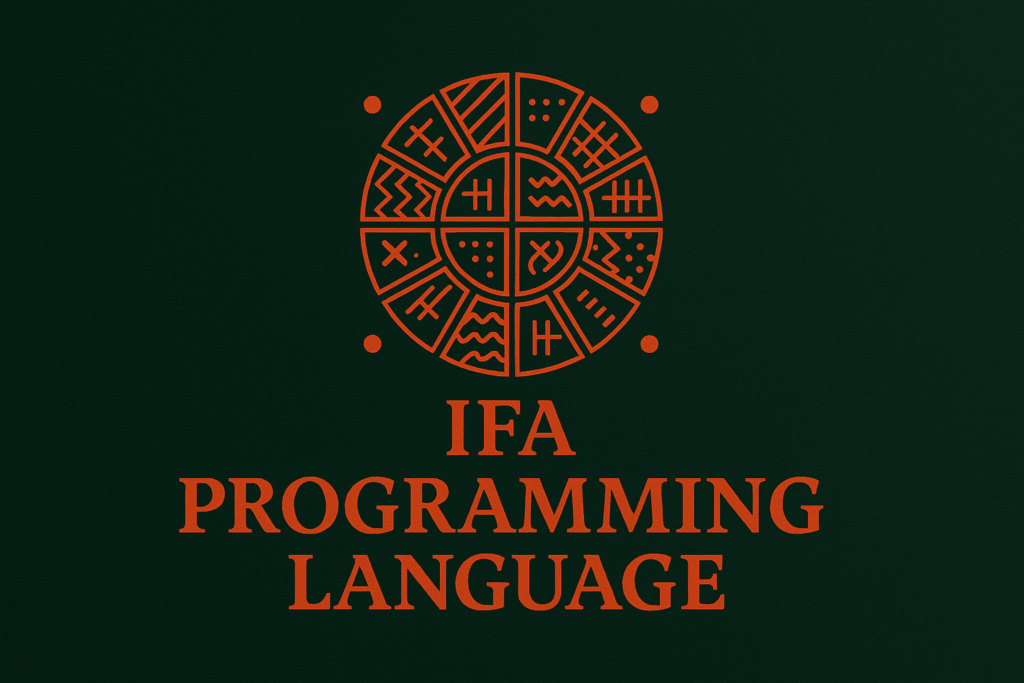Explore the Foundations and Future of Programming Languages
IfaPL is the universe of programming languages (PLs). It reveals the Fundamental Principles (16 Odu Ifa) as the meta-structures that underpin all programming languages and their models.
Ifa PL is a Tool for scientifically studying the features or principles that are common or fundamental to all PLs and modeling them using Ifabits.
IfaPL is the Platform on the IFA Internet for universal problem-solving, sitting at the intersection of all fields of knowledge.
Unveiling the Core Framework Behind All Programming Languages
Meta-Mathematical Foundations
IfaPL provides a comprehensive theoretical structure that underpins all programming models, enabling deep analysis and innovation.
Alternative Designations
Known also as ToE Programming Language and Energy Programming Language, it bridges diverse computational concepts seamlessly.
Integral Component
Embedded within IfaLang, IfaPL offers a universal Language for modeling consciousness and programming everything.
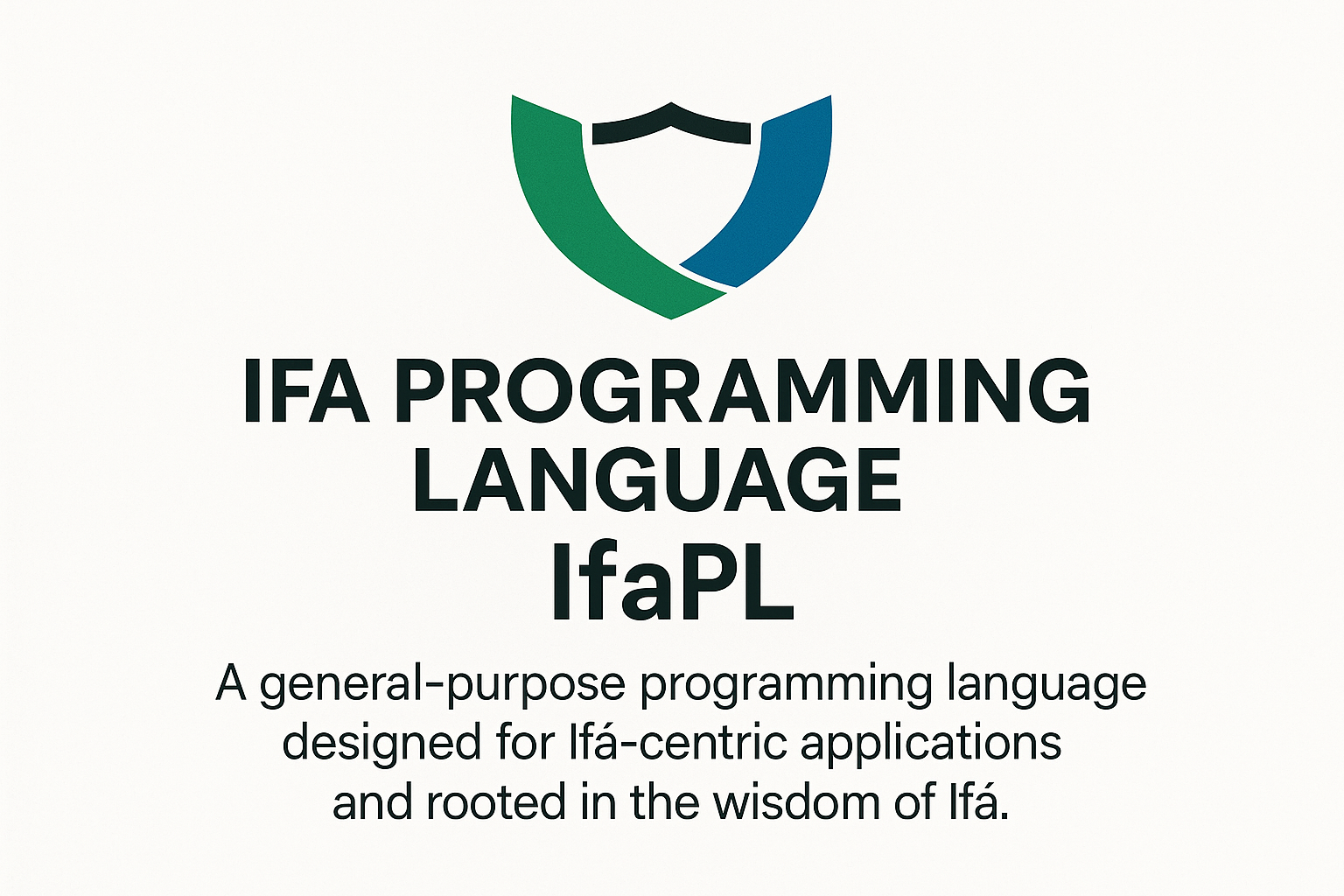
Explore Core Programming Frameworks
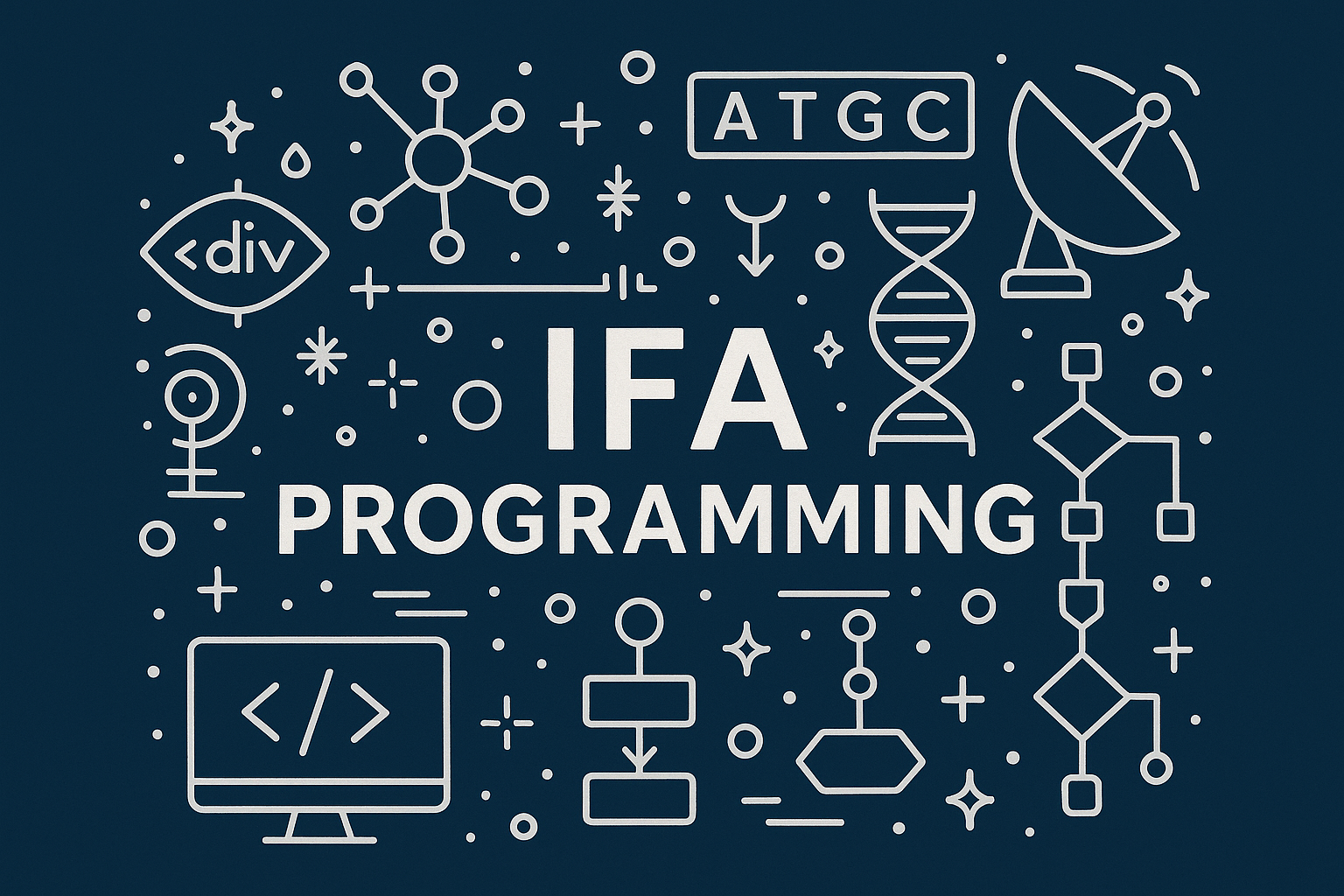
According to the Craft of Coding, the term, ‘program’, originated from ‘prographein’, a Greek word that means “to write publicly”.
The word eventually evolved to the Greek and late Latin, ‘programma’, which means “public notice”.
Today, in the context of computing, programming simply refers to the process of communicating with a computer to solve a problem.
This implies programming is simply an act or art of communication.
However, when programming is examined using the polymathic lens of Ifa known as IfaLens, it’s a very broad concept that describes a highly diverse set of tools for communicating/interacting with non-living systems, like computers, and living systems, like animals, plants, etc.
To get a deeper understanding of programming or computer programming, Orunmila’s number 8 can help.
We can use the number to mathematically structure tons of information on the subject of programming along the following eight key dimensions or pillars of knowledge in the STEAMSEX Matrix:
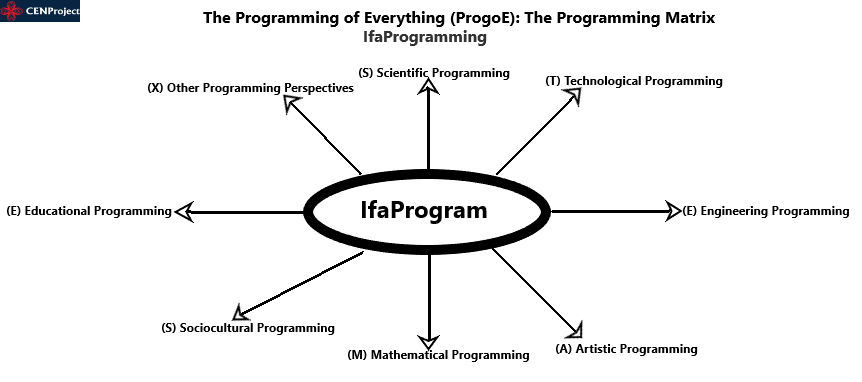
Programming in the scientific context covers genetic programming (DNA coding involving the use of codon table to get genetic information on a system), bioprogramming, and many others.
In Ifa Language (IfaLang), bioprogramming refers to communicating (interacting) with living systems, like animals, plants, fire, water, etc. to solve one problem or the other.
In many indigenous cultures in Africa and beyond, communicating with animals and plants is a key aspect of their Isese (native culture and traditions).
The practice of talking to elements of nature like animals, plants, water, etc., is an ancient science in these cultures, but modern scientists are just getting to understand it in recent times.
For instance, the US tech company, Lumielina developed Bioprogramming® as a proprietary technology for the natural design of genetic phenomena.
In the Ifa Model of education, bio-programming refers to the formal sciences of studying the practices of native/indigenous people (known as Isese in Yoruba) communicating/interacting with elements of nature (Orisa), including Mother Nature herself (Aye), to solve problems in society.
An aspect of Ifa Communications (IfaComms), bioprogramming (Ọ̀rọ̀ lílò or ẹbọ ṣíṣẹ in Yoruba) is based on Orisa Philosophy.
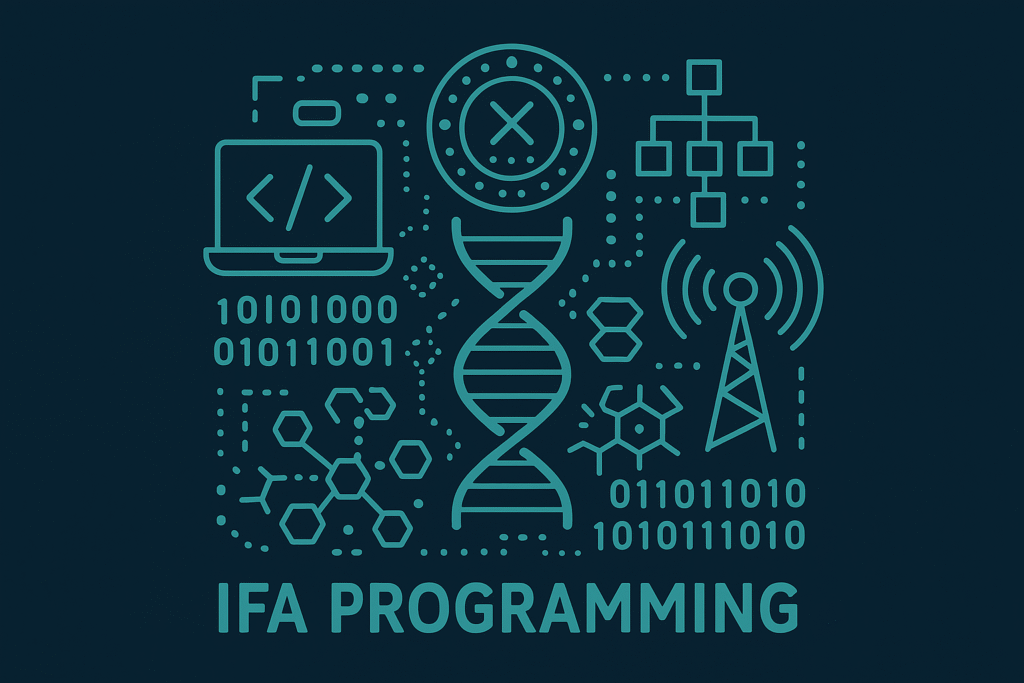
Ifa Programming Language (IfaPL) is the Tool we use to view/study/do programming holistically and mathematically (via Orunmila’s number 8) and unify all perspectives possible and impossible on the subject for deeper insights and to build advanced systems called Ifa Machines or Ifa Technologies (IfaTech).
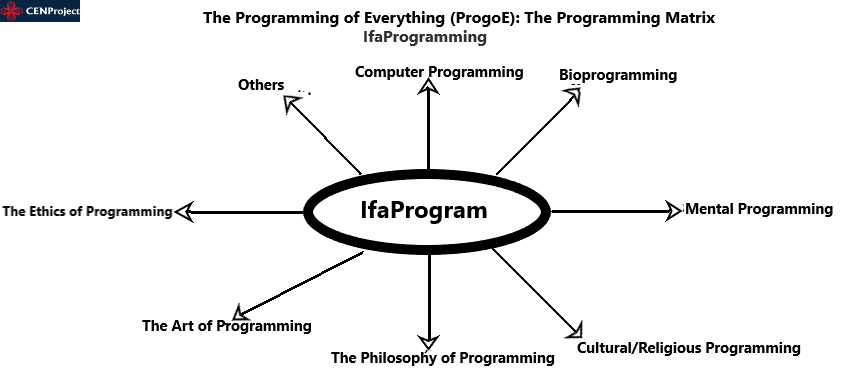
Fundamental Principles
Understand the foundational theories that form the basis of IfaPL’s structure.
Advanced Models
Investigate complex programming paradigms within the ToE framework.
Applied Analysis
Gain practical insights into the applications of IfaLang programming models.
Ifa Containerization: Using the Odu as the Container of All PLs
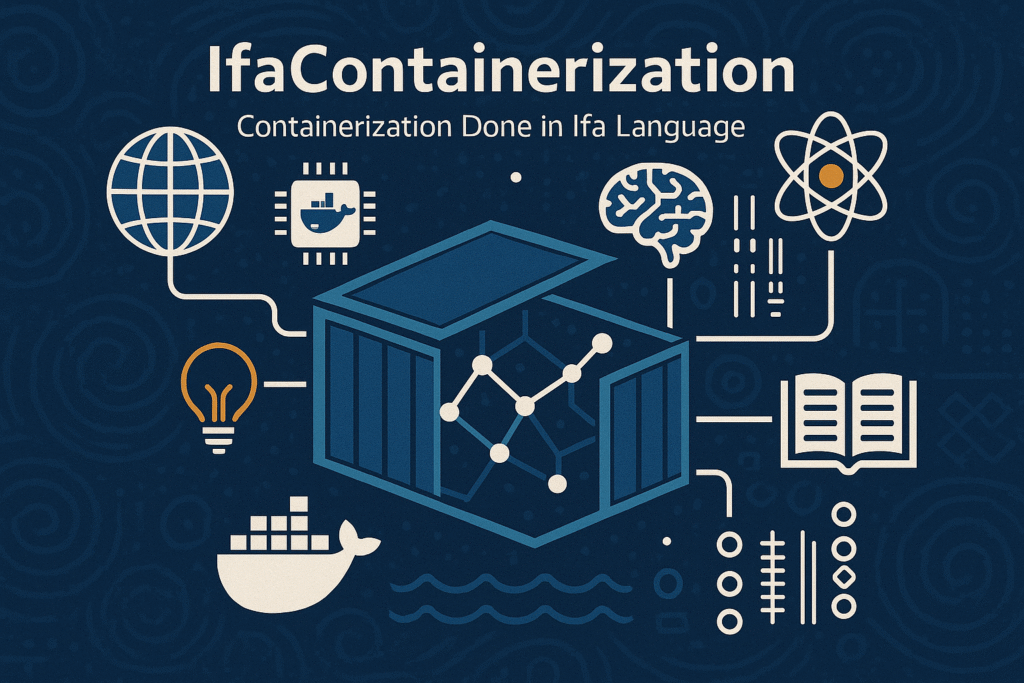
IBM defines containerization as “the packaging of software code with just the operating system (OS) libraries and dependencies required to run the code to create a single lightweight executable—called a container—that runs consistently on any infrastructure.”
It is a key concept in computing, especially software engineering.
In the field of logistics, containerization refers to a system of inter-modal freight transport that utilizes intermodal containers, which are also known as ISO containers or shipping containers.
In the IFA Binary System of Education and Ifa Engineering, Containerization is done in IfaLang using Ifabits.
This is known as IfaContainerization.
It is a key meta-process used to establish Energy (Ogbe) as the common Standard or Interface for all fields of knowledge, PL, processes, systems, technologies studied or built on the IFA Internet, the Theory of Everything.
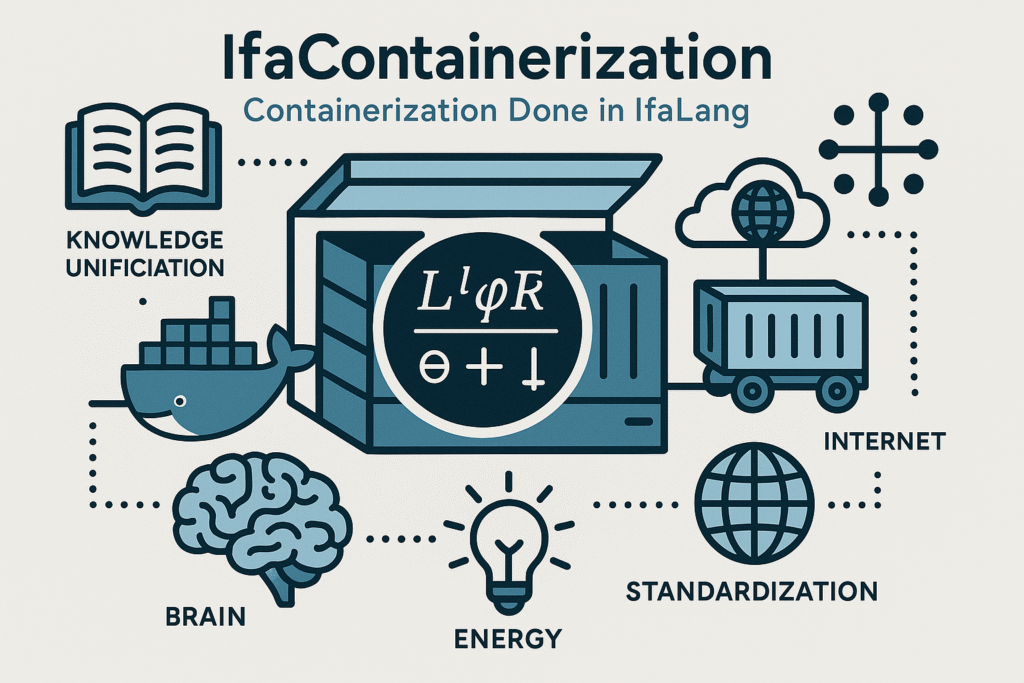
For any field, system, technology, PL, anything at all represented with X and defined in IfaLang, the prefix ‘Ifa’ means the container and fundamental building block of X.
IfaContainerization generalizes the concepts of containerization in computing and logistics to all fields of knowledge.
IfaContainer is a vital tool of knowledge unification and integration, IfaTech Development, and IfaSoftware Engineering on the Ifa Computer and the IFA Internet.
Unlock the Core Principles of IfaPL Now
Discover how the Ifa Programming Language shapes the foundation of all coding paradigms and join our insightful community.
- Meta-Mathematical Framework
- Universal Programming Model
- Universal Meta-Programming: Programming of Everything (ProgoE)
- Ethical Science and Engineering
- Theoretical Analysis Tool
